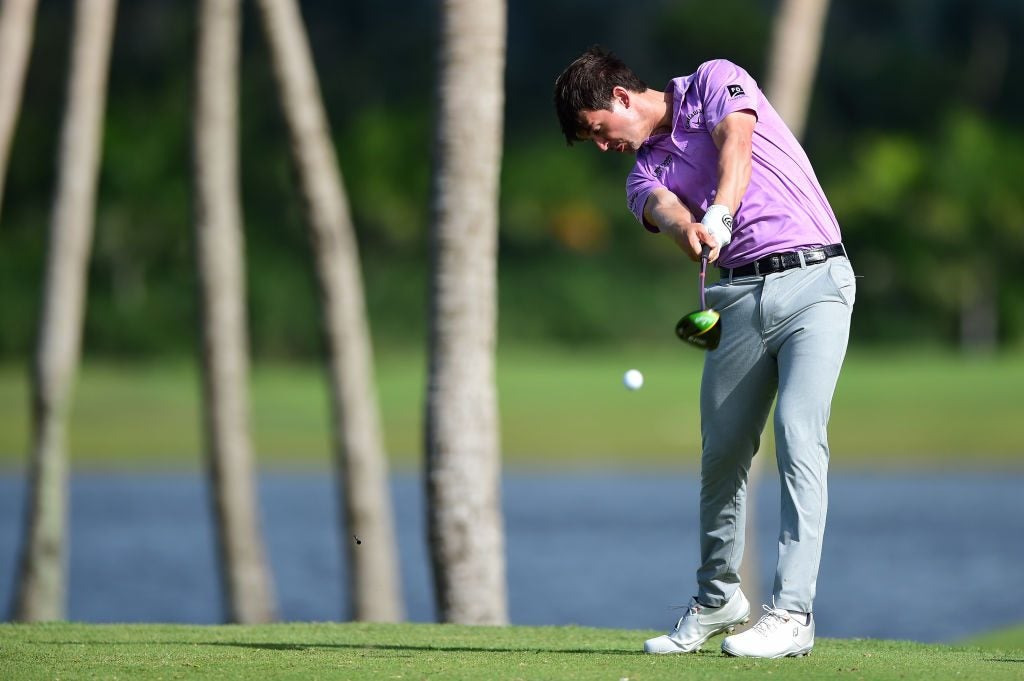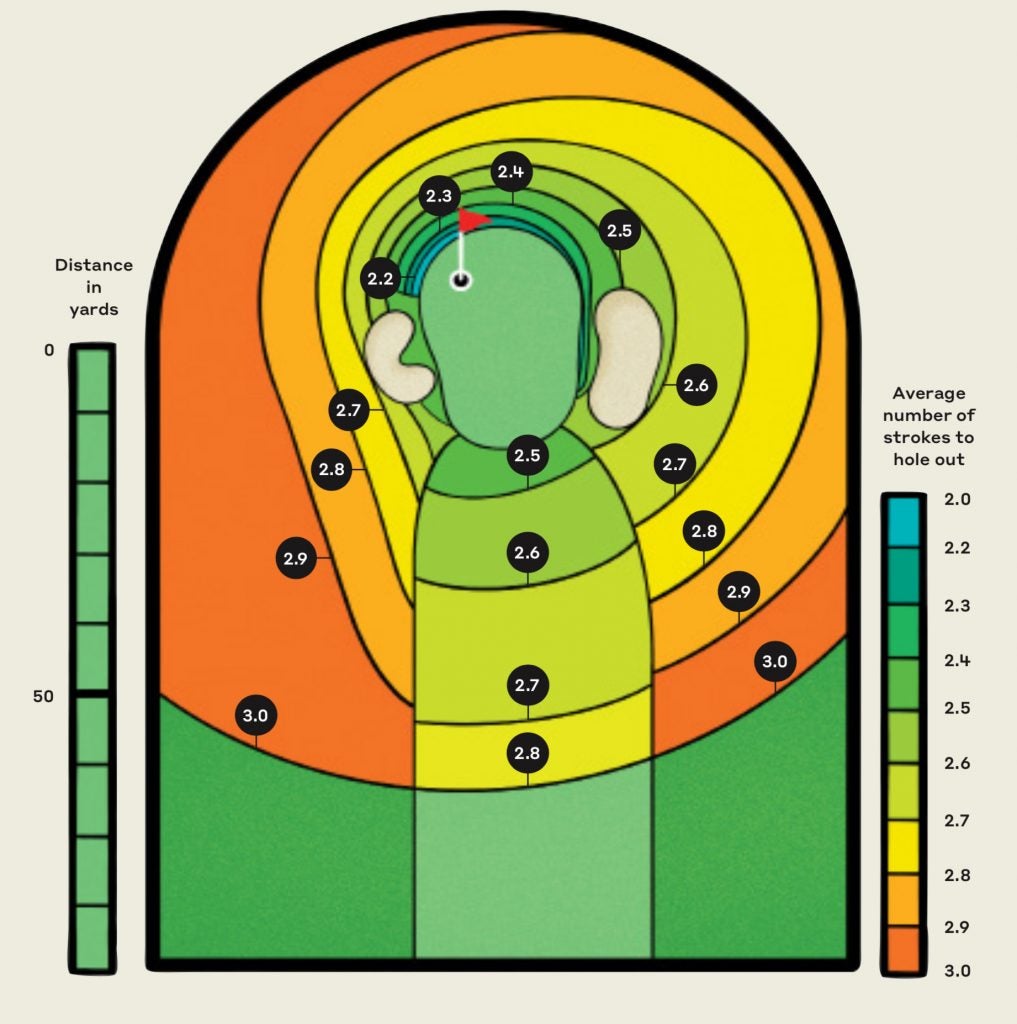Ollie Schniederjans stepped onto the 17th tee box during the final round of the 2018 Waste Management Phoenix Open at 15-under par, nipping at the heels of leaders Gary Woodland and Chez Reavie. The 17th at TPC Scottsdale, at 318 yards, is driveable by Tour standards. The pin stood three paces from the left edge of the green and seven paces from a water hazard. The hole was gettable that day, with 42 out of 72 players carding birdie or eagle. Schniederjans let loose a 308-yard blast.
Good enough, right?
No.
Ollie pulled it so far left that the ball landed on the opposite side of the hazard, leaving him about 30 yards from the pin. Distance wasn’t the issue. Because of the placement of the pin relative to the hazard, Schniederjans was now forced to completely carry the water with 10 feet of green to work with—the purest definition of “short-sided” you can find. It would have been a different story had Ollie hit the same drive but with a miss to the right: no hazard, plenty of green with which to work and the option to play a multitude of different shots—what you’d call a “good leave.”

Traditionally, golfers look forward to short-sided misses as much as they do an IRS audit—something to be avoided at all costs. Are they as difficult as lore indicates? I crunched the numbers.
Introducing the “Short-Sided Index”
To start, I created an index of short-sided severity, plotting the distance from the ball to the edge of the green against the distance from the ball to the hole.
The resulting short-sided index (SSI) ranges from 0 (manageable) to 1 (damn near impossible). The average SSI for around-the-green shots on the PGA Tour is 0.48. In Ollie’s case, he was 26 yards from the edge of the green and 29 yards from the hole—an SSI of 0.9! So, yes, Ollie really short-sided himself. It gets worse: From 29 yards from the pin in a rough lie with an SSI of 0.5, PGA Tour pros require, on average, 2.72 strokes to hole out. When the SSI balloons to 0.9, pros need 3.06 strokes. That’s significant. The penalty for missing on the short side is real.
The data proves it.

Regardless, players will continue to risk doing so, firing at pins fraught with danger. Who’s most likely to toss caution to the wind? Again, I crunched the numbers, averaging the SSI of the endpoints of every player’s approach shots from the fairway or tee that missed the green, creating an “aggression index” (AI). A positive AI value indicates an aggressive approach-shot strategy; a negative AI indicates a more conservative game plan.
Last season, Jason Day was the most aggressive approach-shot player on Tour by a wide margin, with an AI of 3.00 (Justin Rose was second at 2.51). The most conservative player? Johnson Wagner at -3.16.
Back to Schniederjans. He knocked it on and two-putted from 28 feet, a result the numbers would suggest from such an extremely short-sided position. Reavie and Woodland both birdied 17, en route to a two-man playoff—a fitting end to this short (side) story.
[bc_playlist playlist_id=”6011756903001″ account_id=”416418725″ player_id=”BkgfYWxJW7″ embed=”in-page-vertical” autoplay=”” mute=”” min_width=”” max_width=”” padding_top=”” width=”640px” height=”360px” ]







